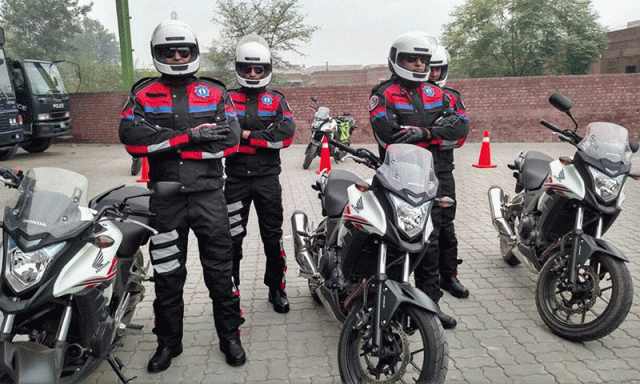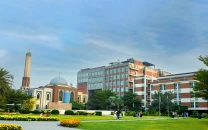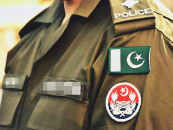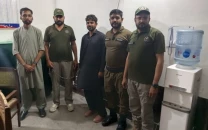Dolphin Squad fails to imbibe public trust
Former DIG says force was introduced to promote community policing

Police in this city have been bestowed with the use of force in the name of “maintaining law and order, peace and safety”.
A large amount of resources and energy is pumped into it -- “building the capacity to use force” including “excessive use of force”. However, unfortunately, not that much is invested in teaching them to show maximum restraints.
Frequent incidents of “excessive use of force” tainted the image of the force and led to losing its credibility among the people. This should be stopped. However, a contradiction has been noticed. It is considered a means of creating “deterrence”.
In reality, it promoted and created a realization of “nuisance value” in police rank and file. This has happened with the Dolphin Squad, a specialised patrolling wing built by the Punjab government to promote 15 emergency call response mechanisms and promote community policing over the years.
A former DIG, Dr Haider Ashraf, under whose command the squad was launched in Lahore, had said in an interview that the dolphin, the animal, was considered to be a symbol of love and affection. It was introduced to promote community policing, he had said. However, it has failed to live up to its purpose and mission.
In many instances, it has been accused of resorting to opening fire when it could have exercised restraint. In the last four years, at least seven such incidents in which innocent people had been shot at by the squad have been reported.
In a most recent incident, a citizen who called 15 for police help during a dispute in the Township area was shot at by an official of the Dolphin Squad. In another instance, a Dolphin Squad team had shot at a shopkeeper in Abdali Chowk, Islampura. The victim had called for help after falling victim to an armed robbery.
Read Police brutality: Trigger happy cop shoots citizen calling for help in Lahore
Earlier, members of the force had inadvertently shot dead a teenage boy while chasing some suspected robbers on the Band Road and also shot dead a woman who had been returning home from her office in Naseerabad in a separate incident.
In yet another incident, a young boy, returning home after buying some medicine for his ailing mother was shot at and injured. Members of the “elite” police squad had also been found guilty of killing a mentally-challenged individual in Gulshan-e-Ravi.
The use of lethal force in all these instances is a violation of the Standard Operating Procedure (SOP). If this trend goes unaddressed, it will vitiate the image of the police among the people. There have been a few instances in Pakistan in the recent past, namely, “the murder of Naqeeb Mehsud in Karachi”, the Sahiwal tragedy, the murder of college student in Islamabad at the start of this year.
The latter two incidents had resulted in massive lash-outs against the police on social media. Unfortunately, the unrestrained killing of innocents in shootouts is not a matter of concern for those at the top. One key element in this regard is the missing data and analysis of such incidents.
There is no study available that could show the total number of such incidents during a certain period and the underlying causes behind them.
A police officer responding to a crisis-like situation has to make a decision in a split second being unaware of the situation. In a conflict between two parties, each party is expecting the police to be siding with them as each of them considered themselves right.
A police officer has to respond to arresting a suspect -- dealing with a person who knows that his freedom is going to be curtailed for a specified or indefinite period of time. Such a person may offer resistance. All these situations are tricky and need a lot more expertise, practical wisdom and rigorous training.
The chief executive of the country, its federating units, and the police top brass should take into account the instances in which police resorted to using violence dealing with its citizens. A comprehensive analysis should be done that is both quantitative as well qualitative in nature.
This should be projected with a perspective to specify the reasons that prompted violence and also note down the police officials' response that mitigated or averted the use of violence or reduced its intensity.
Training of a cop’s ideal response in crisis or violence/ conflict between police and citizens should be made a permanent part of their modules for new recruits. Those already in service should be made to go through mandatory refresher courses.



















COMMENTS
Comments are moderated and generally will be posted if they are on-topic and not abusive.
For more information, please see our Comments FAQ